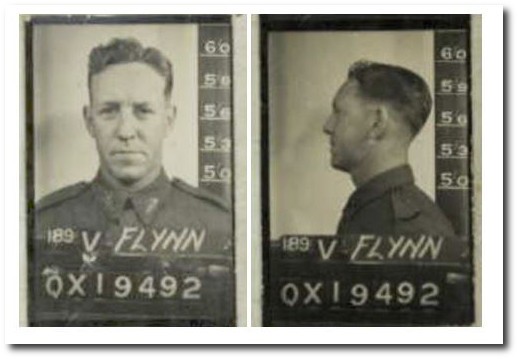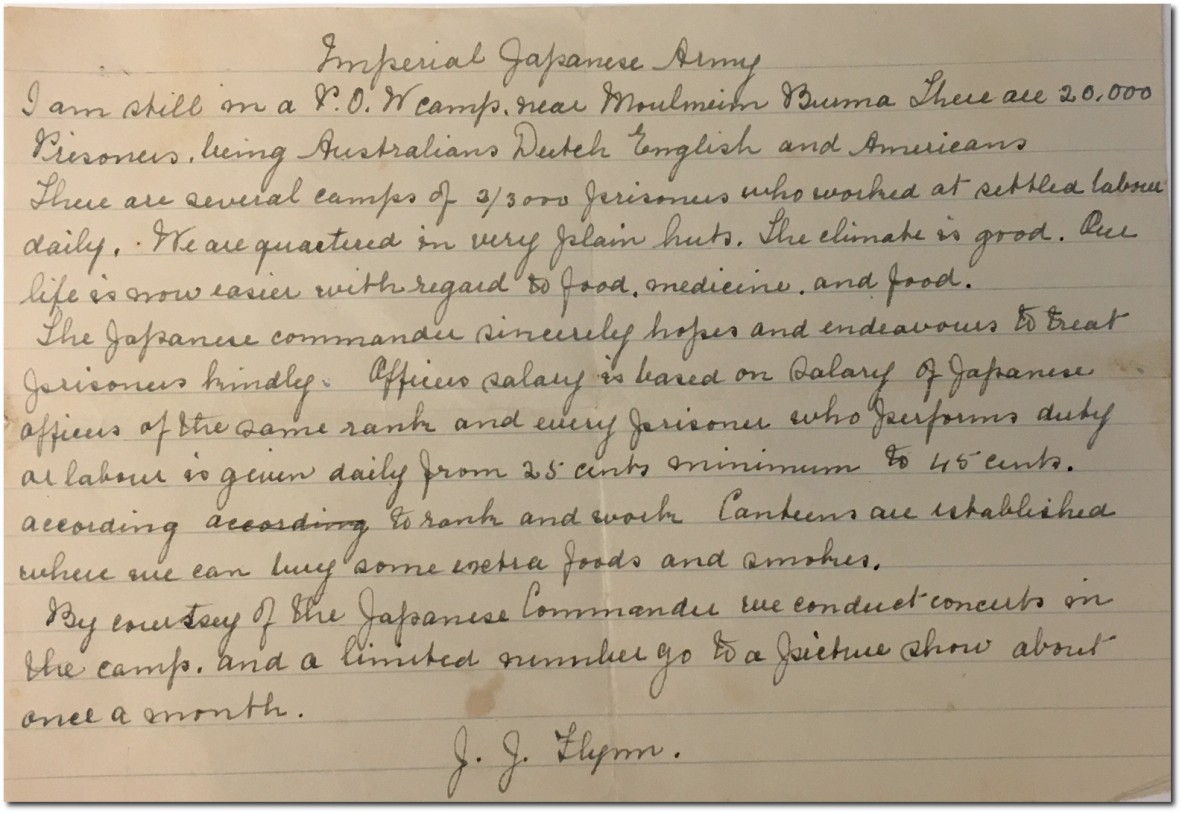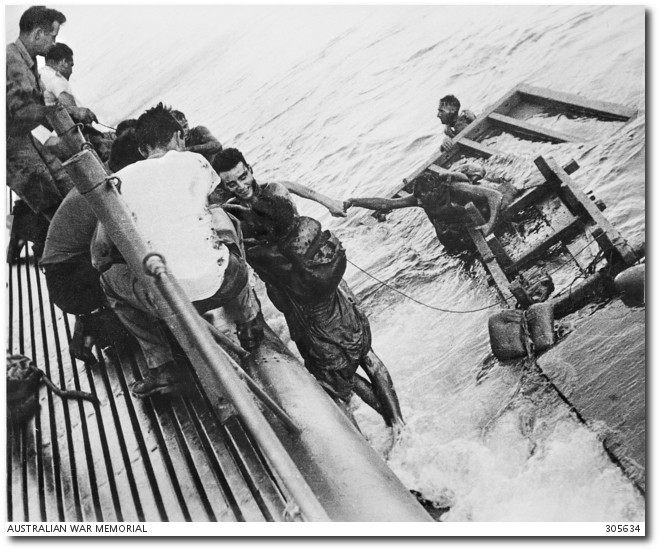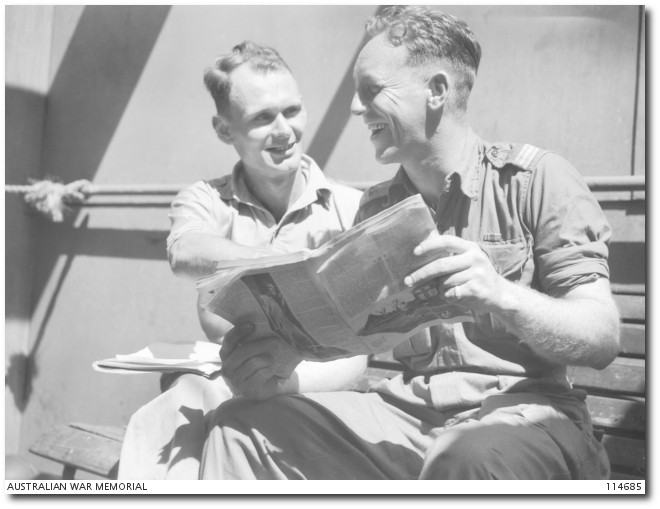
John (Jack Flynn) QX19492, Courtesy National Archives of Australia, B883
Jack Flynn stepped forward in July 1940 and volunteered to join the Army where he flourished. A keen athlete, he was selected to attend a specialist Physical Training Instructors course in Victoria, but after injuring himself, earned himself an early discharge.
Undaunted, he made a pest of himself until he was once again taken into the ranks in May the next year, serving with the 2/105th General Transport Company AASC, leaving Sydney for the Middle East in November 1941. Here his skills as a driver were put to good use, as they transported troops and equipment to support the infantry and pioneer battalions.
With the build up of Japanese troops in the Pacific region and the bombing of Pearl Harbor in December 1941, many units were ordered to return to Australia. The 2nd/105th left Egypt on board the Orcades on 1 February 1942, but before they reached Australia the ship was diverted to Batavia to support the Dutch.
Australian troops were organised into one force under Brigadier Arthur Blackburn. Men of the 2/3rd Machine Gun Battalion, 2/2nd Pioneers, some Royal Australian Engineers, a Casualty Clearance Station and two transport companies including the 2nd/105th and Jack Flynn took on the advancing Japanese Imperial Force.
Now known as the Battle of Java the troops were out numbered and under-equipped to fight on. The allies surrendered on 8 March 1942, the day that Jack Flynn was reported 'Missing believed to be POW'. Later intelligence showed that Jack was interned in Southern Burma, at Moulmein Camp.
Jack wrote a letter home, which is held among the treasured collections of State Library of Queensland. Undated, he wrote there were 20,000 prisoners, Australians, Dutch, English and Americans, and with his tongue fully in-his-cheek that "the Japanese Commander sincerely hopes and endeavours to treat prisoners kindly".
Jack was most likely forced to conceal the real conditions by using language that fooled his captors - such as "very plain huts", "the climate is good" and "food, medicine, food". It was from here that Jack and his fellow prisoners of war (POWs) were forced to work on the infamous Burma-Thailand railway under deplorable conditions.

Letter from Jack Flynn to his family while prisoner of Japanese in Burma (Myanmar), State Library of Queensland, OM73-41-1 M. Howie Papers 1944.
In September 1944 two Japanese troopships, SS Rakuyō Maru and SS Kachidoki Maru, were part of a convoy transporting Australian and British POWs, including Jack, from Singapore to Taiwan. On 12 September 1944 the troopships were sighted in the Luzon Strait by three US Navy submarines. Unaware the ships were being used as prisoner transports, they fired upon and sunk the convoy. Japanese vessels came to retrieve their own survivors, but they left any prisoners to take their chances. Covered in oil from a tanker that had also been sunk, without water or life rafts, they struggled to keep alive, clutching to makeshift rafts, for three days.
Fortunately, the US submarines returned to the scene and noticed men waving to them and calling out, in English, "Please help us". The American sailors threw out lines and jumped into the water to save the stricken POWs. Jack was one of the last groups to be rescued. Over 1,000 of those Allied POWs aboard the Japanese transports when they sank, lost their lives. Already weakened and malnourished Jack and his fellow survivors were initially taken to Saipan, an American base in the Mariana Islands, then on to California for further treatment.
View footage of the rescue, via US National Archives [YouTube] taken from cameras mounted on the submarine periscopes.

Oil soaked British and Australian prisoners of war who survived the sinking of the Japanese transport Rakuyo Maru and later rescued by the submarine USS Sea Lion, 15 September 1944, Courtesy Australian War Memorial, 305634.
By October 1944 Jack Flynn had returned to Brisbane and like all returned POWs was granted 2 months special leave but was in and out of medical care for many months, most particularly with recurring bouts of Malaria. Yet in August 1945 Jack was once again on board a ship, bound for Singapore. Having heard of groups being sent to help assist the repatriation of POWs at war's end, Jack Flynn sought inclusion in the '2 Australian Prisoner of war Reception Group', to assist those comrades who he left behind.

Jack Flynn (right) with another member of 2 Australian POW Reception Group, MV Duntroon, 3 September 1945, Courtesy Australian War Memorial, 114685.
The Australian War Memorial has footage of this group in which Jack Flynn is featured:
View footage of the 2 Australian Prisoner of war Reception Group [AWM]
Jack Flynn recorded his experiences in a self-published memoir that is held at State Library, as well as the Australian War Memorial. His military career is also featured in the World War Two Memorial Gallery at Anzac Square.
In 2022 we will be featuring 15 stories of service personnel from WWI to present. We encourage you to share your stories of service with us. To learn more about this campaign and how you can contribute, visit our website.
Discover more …
- View footage of the rescue, via US National Archives [YouTube] taken from cameras mounted on the submarine periscopes.
- Service record: FLYNN, John James
- Reminiscence of John James Flynn P9405472 FLY
- OM73-41 M. Howie papers
Marg Powell | Specialist Library Technician | State Library of Queensland
Updated by Anzac Square Memorial Galleries
Comments
Your email address will not be published.
We welcome relevant, respectful comments.